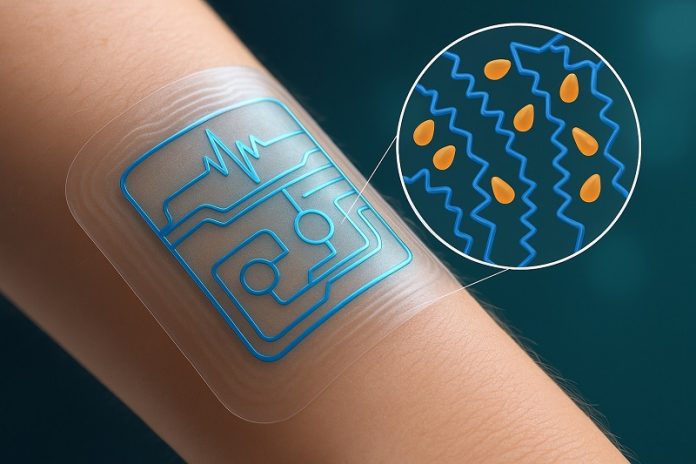
Imagine a soft, stretchy patch on your skin that can track your heart rate or detect stress hormones in your sweat—just like a second skin.
To make this possible, researchers need to develop materials that are not only flexible and biocompatible but also able to conduct electricity efficiently.
That’s no easy task, because stretchability and electrical conductivity usually don’t go hand in hand.
Now, scientists at the Max Planck Institute for Polymer Research have made a major breakthrough.
In a study published in Advanced Science, they show a new way to improve both the stretchiness and electrical performance of a popular conducting polymer called PEDOT:PSS.
This material is already known for being transparent, flexible, and safe to use with the human body, making it a promising candidate for wearable electronics.
Led by Dr. Ulrike Kraft, the research team discovered that they could enhance PEDOT:PSS by using a process called transfer printing.
In this method, a thin film of the polymer is transferred onto a soft, stretchable substrate that contains special additives called plasticizers. These plasticizers slowly move into the polymer and change its structure at the molecular level.
This simple but clever step greatly improves the polymer’s ability to stretch without breaking while also increasing its conductivity.
In fact, the team observed something remarkable: when stretched, the polymer chains actually line up more neatly, allowing electricity to flow more easily. That’s exactly the kind of behavior needed in wearable devices that must bend, twist, and move with the body.
Carla Volkert, a doctoral student and the study’s first author, explains that this process not only improves performance but also helps scientists understand how these materials behave under stress.
By using techniques like microscopic imaging, atomic force microscopy, and Raman spectroscopy, the researchers studied how the polymer’s structure and electronic properties change when it’s stretched.
This work could lead to the next generation of flexible health monitors—devices that can be worn directly on the skin to measure vital signs or detect changes in sweat that signal stress, illness, or fatigue.
These sensors could eventually be used for medical monitoring, fitness tracking, or even personalized health care.
Dr. Kraft says the next step is to use this new method to create and test real biosensors. If successful, we may soon see wearable devices that are not only more comfortable and accurate but also blend seamlessly with our bodies—making health monitoring easier than ever before.
Source: KSR.



